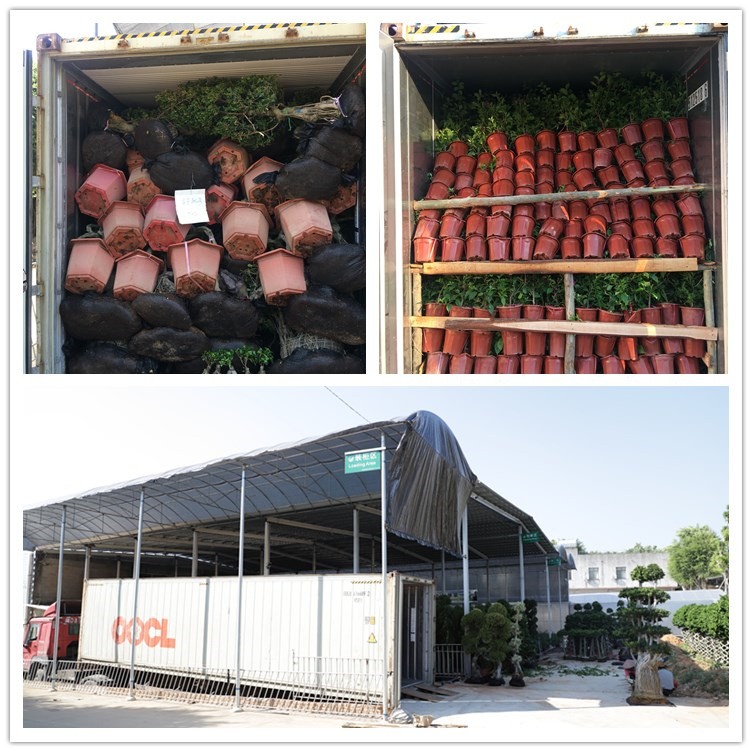Ficus benjamina is a tree with gracefully drooping branchlets and glossy leaves 6–13 cm, oval with an acuminate tip. The bark is light gray and smooth. The bark of young branches is brownish. The widely spread, highly branching tree top often covers a diameter of 10 meters. It is a relatively small-leaved fig.The changeable leaves are simple, entire and stalked. The young foliage is light green and slightly wavy, the older leaves are green and smooth; the leaf blade is ovate to ovate-lanceolate with wedge-shaped to broadly rounded base and ends with a short dropper tip.
Nursery
We are seated at ZHANGZHOU, FUJIAN, CHINA, our ficus nursery takes 100000 m2 with the yearly capacity of 5 million pots. We sell ginseng ficus to Holland, Dubai, Korea, Europe, America, Southeast Asia, India, Iran, etc.
We have gained good comments from our customers with excellent quality, competitive price, and integrity.

Exhibition
Certificate
Team
How to nurse ficus benjamina
1. Light and temperature: It is generally placed in a bright place during cultivation, but direct sunlight should be avoided, especially the leaf. Insufficient light will make the internodes of the leaf elongate, the leaves will be soft and the growth will be weak. The optimum temperature for the growth of Ficus benjamina is 15-30°C, and the overwintering temperature should not be lower than 5°C.
2. Watering: During the period of vigorous growth, it should be watered frequently to maintain a moist state,and often spray water on the leaves and surrounding spaces to promote plant growth and improve leaf gloss. In winter, if the soil is too wet, the roots will rot easily, so it is necessary to wait until the pot is dry before watering.
3. Soil and fertilization: Pot soil can be mixed with humus-rich soil, such as compost mixed with an equal amount of peat soil, and some basal fertilizers are applied as base fertilizer. During the growing season , liquid fertilizer can be applied once every 2 weeks. The fertilizer is mainly nitrogen fertilizer, and some potassium fertilizer is appropriately combined to promote its leaves to be dark and green. The size of the pot varies according to the size of the plant.